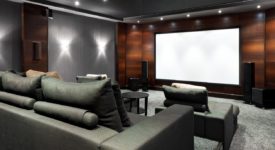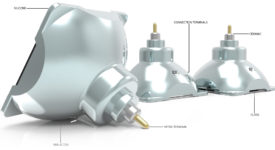If you’re here to learn about the history of projectors, you’re in the wrong place! We’ve decided to give you a brief explainer on the technology as it relates to home theater, school, and business use since our blog deals with everything screen and projector-related. If you’re looking for the history of projectors, I’d suggest Wikipedia. We’re going to assume you know what a projector is and have seen at least one or two in school or work or some other place in life.
Projectors, simply put, are devices that consist of two main components: a light source, and a picture.
Pre-21st Century Projectors
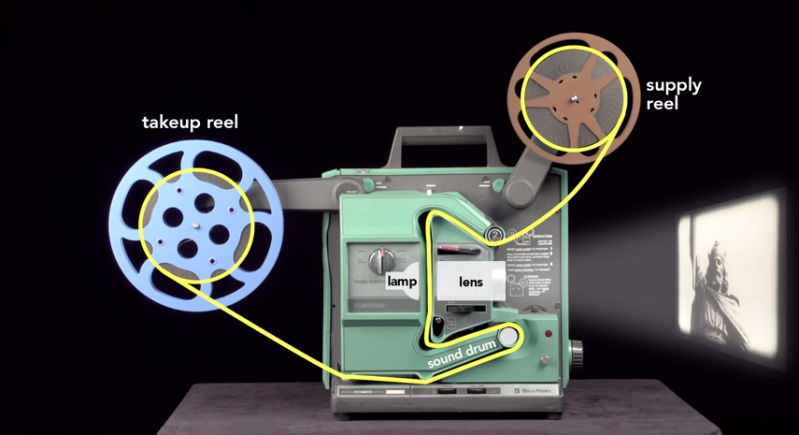
Back in the day, and again we stress we aren’t going to give you a history of projectors, film and movie projectors like the one seen above used a lamp and a reel of film which focused through a lens onto a screen. This should give you a very simple explanation on the technology we see every day, all around us.
Cathode-Ray Tubes (CRT) and Rear Projection TVs (RPTV) and Resolutions
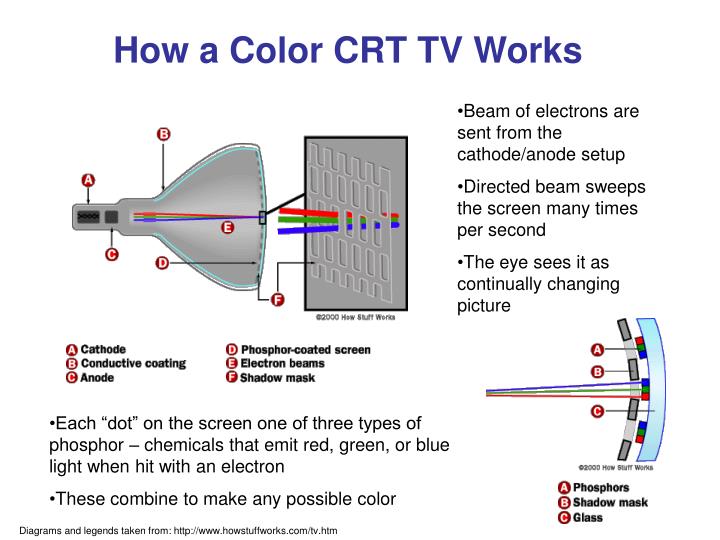
We can’t talk about home theater projectors without starting with the precursors to the technology: Cathode-Ray Tubes. CRTs were the next big game-changing technology that dominated most of the 20th century. CRTs worked by shooting electrons at a glass screen, line by line—with a resolution of 480i interlaced (Standard Definition), then as technology improved, 480p & 720p (progressively). Think about the 1980s and playing an NES (Nintendo Entertainment System for those that don’t know). If you use an old gaming system on a newer television, it typically has to upscale and looks horrible. TVs today are 1080p HD, or 4k, or even 8k resolution. Consumer electronics companies squeeze more and more pixels into a smaller space, further fooling your eyes into thinking the image is real.

The human eye can discern about 40 megapixels in a small range (more or less since the human eye isn’t actually rated in pixels). 8K is 33 megapixels, however, viewing something in 8K is generally regarded as better than the human eye can see.
The heavy, bulky Rear Projection TVs typically used CRT technology to throw images onto the screen, but this technology was eventually replaced by the superior image quality of DLP Televisions. Although still quite bulky, DLPs used a Digital Micromirror Device (DMD) as the image source and an Ultra High Pressure (UHP) lamp as a light source.
Digital Light Processing (DLP)
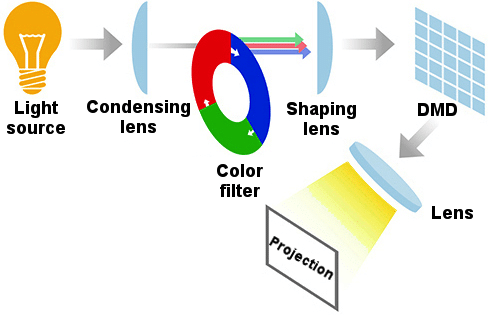
DLPs work by using a UHP light source which shines through a color wheel/color filter, which shapes the color onto the DMD, then the light reflects onto a lens and out to a screen.
The DMD is the optical engine consisting of millions of tiny mirrors that tilt toward and away from the light source producing a crisp image. This technology is still used today in modern projectors for film or home entertainment.
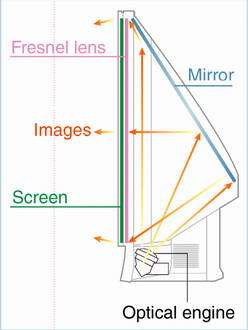
Modern Projectors
As TV technology has gotten cheaper to produce, there is a widespread use of LCD, LED, QLED, and OLED screens. Projectors are back in a box form and not as popular as stand-alone televisions any longer, but you or someone you know may still have a DLP TV in their basement.
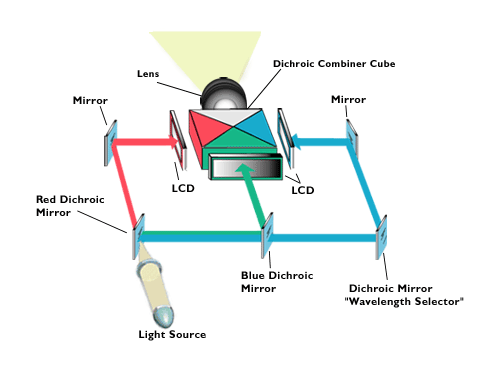
Modern projects still work similarly consisting of a light source and an image processor. LCD technology uses liquid crystals to control how light passes through each pixel. LCDs process multiple colored images (red, green, and blue light components) that combine into a single image, while a DLP uses the same micromirror principle as the DLP Televisions of the early 2000s. The only common component between them is the light source.
Light Source Matters!
Your best bet is a high-quality lamp that will give you hours of entertainment. We recommend name brands such as Philips UHP because they will last the longest, but if you’re looking for cheaper alternatives, we do a test of different lamps so you don’t have to.
The Downside of Projectors
Heat is one of the most important factors in determining if you have the space to use a projector with a UHP light source. UHP lamps burn really hot, and really bright, which causes a lot of heat. You’ll typically get the best picture out of a UHP light, so here are some things you need to know:
- Ventilation matters! Make sure you’re using the projector with plenty of space for air to move around, or out of the projection system.
- Check the filter if you have a fault in your system. A clogged filter will cause heat issues causing the projector to fail.
- Projectors are also limited to the size of your space. You’ll get a very small image if you don’t have enough room to project your image, unlike LED/LCD televisions that need as little as an inch of depth.
- Lamp life matters. Higher quality lamps will last longer with proper projector maintenance. You should stock up on lamps just as you would with your home lighting if you plan on using your projector as a home theater.


